Last Updated on April 5, 2024
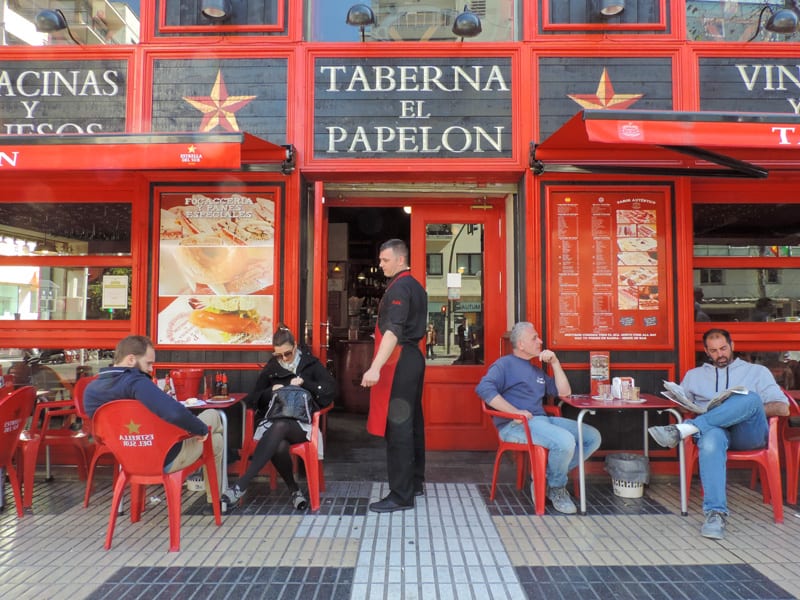
You won’t find a city quite like Seville anywhere else in Spain. Probably, also not in all of Europe, for that matter…
Estimated reading time: 9 minutes
By Jim Ferri
Seville is a city known for seduction. It is, after all, the city of Don Juan and opera’s Carmen, the latter torn between her army officer and, as befits Seville, her bullfighter.
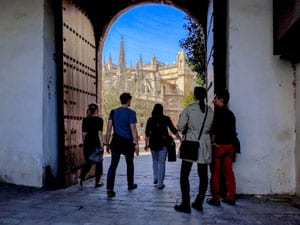
I first sensed how laid-back this city was while chatting with my taxi driver on my way from the airport. Later on I continued to see it all about me, in the cafés, on the streets, even in my hotel.
It’s part of the DNA of Sevillanos, just as is their resistance to change their traditional ways. Despite the change past decades have brought to other areas of Europe, in Seville time stands still. From the pageantry and spectacles of its Holy Week celebrations, to its fervor for bullfighting, Seville remains firmly entrenched in the traditional way of life of past centuries.
In many ways, it’s what makes the city so damn charming.
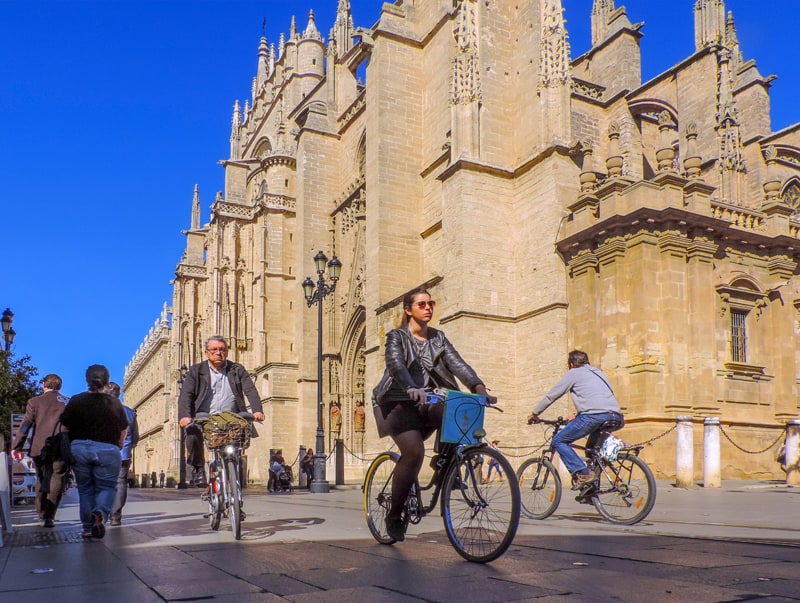
Seville Cathedral and La Giralda
The heart of the old city, Barrio de Santa Cruz, contains many, but not all, of the points of interest in the city. Primary among them is Seville Cathedral, built on the site of a huge mosque. It’s the city’s centerpiece and the third largest cathedral in Christendom, a marriage of Christian and Moorish elements that is awe-inspiring.
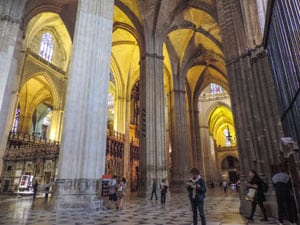
It’s said that its designers wanted to build a cathedral so large that future generations would think they were crazy. What they attained was the largest cathedral in the world, not by square footage, but by its volume. It is lofty and immense, so much in fact that in my awe when wandering about I forgot to look for the tomb of Christopher Columbus.
The magnificent bell tower of the cathedral, named “La Giralda”, is actually the minaret of the Great Mosque of Selville. Built by the Moors in 1248, it later had its Renaissance top added by the Catholics after the expulsion of the Muslims.
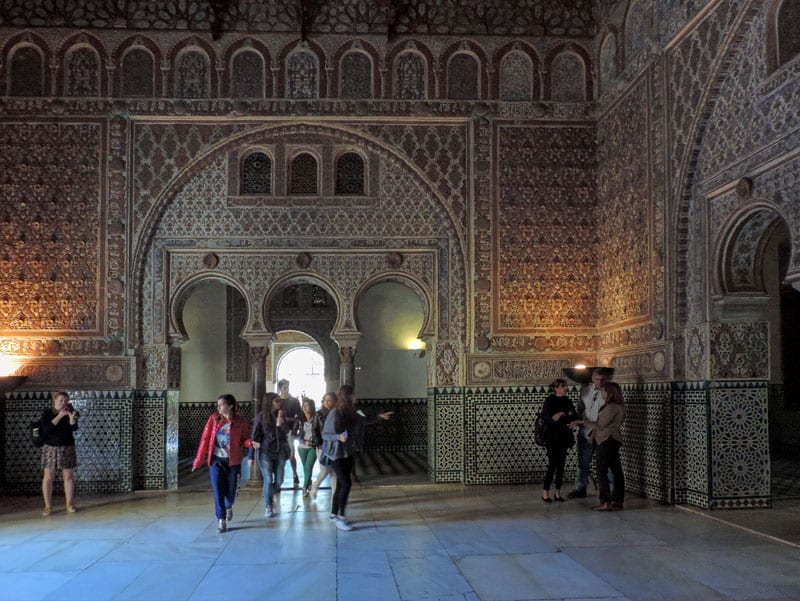
The Top Thing to Do in Seville: Tour the Real Alcázar
Across the Plaza de Triunfo in front of the cathedral, where pigeons and parrots flutter above the palm trees and there are more horse-drawn carriages than you ever imagined existed, is the Real Alcázar (Royal Palace). A UNESCO World Heritage Site, it’s the oldest Royal Palace still in use of Europe.
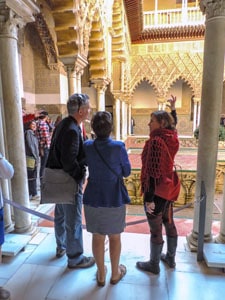
It’s one of the most incredible palaces you’ll see anywhere, a beautiful and sumptuous complex of stonework and colorful Mudejar tiles begun in the 10th century and added on to by subsequent caliphs and Spanish kings. There’s a lot to see in the extraordinary complex ranging from small rooms to grand halls with tapestry-covered walls, as well as the palace’s beautiful formal gardens, much of it laid out in Renaissance style.
If you’re visiting Seville put it at the top of your list of “must-sees” but be sure to visit during non-peak times, preferably in the morning before it gets warm. At the entrance there are long waiting lines during peak times.
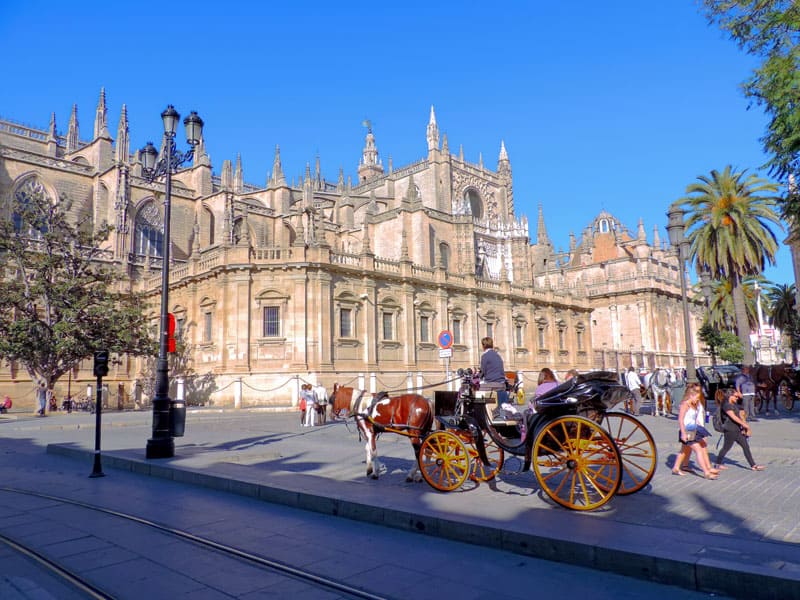
Stroll Along Avenida de la Constitución
Avenida de la Constitución is the main pedestrian-only artery in the heart of the city. It connects Seville’s upscale shopping area with Calle San Fernando that passes between the Alcazar gardens and the luxury Alphonso XIII hotel before continuing on towards the university.
Midway, where it skirts the cathedral and Plaza de Triunfo, a phalanx of tables sweep out across the sidewalk. Both visitors and Sevillanos are drawn here by everything from breakfast, lunch and afternoon ice cream, to tapas and drinks well into the wee hours.
Strolling along Constitución one afternoon, I came across three street musicians. These three headless street musicians were one of the most fun things I had seen in Seville. See them in the short video below.
The Avenida de la Constitución is a beautiful pedestrian street punctuated by ornate lampposts and orange trees. The many outdoor cafes and little tapas bars that line the street add to the wonderful ambiance.
Seville is famous for its orange trees, which you’ll see in many places. But despite its celebrity, its doesn’t make its way into the local cuisine due to its bitterness. It’s instead sent to the UK to be made into marmalade.
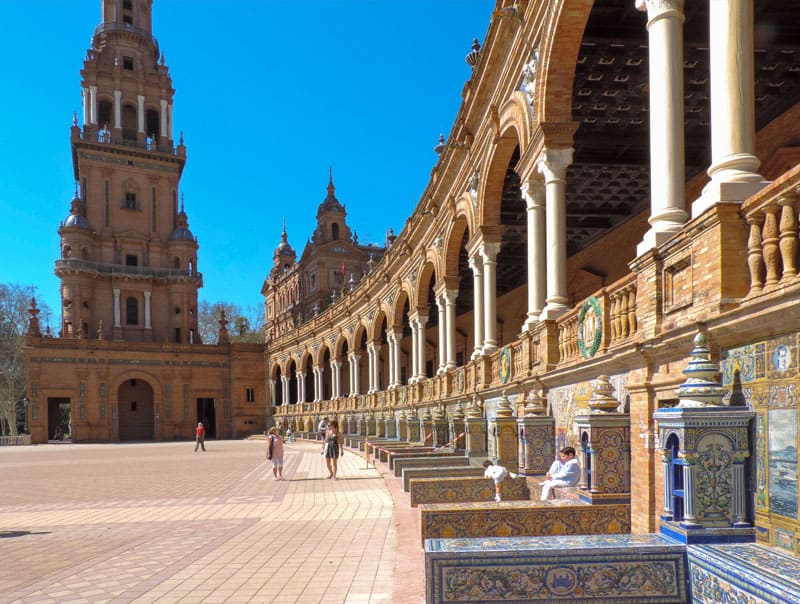
Immerse Yourself in Seville’s History
You’ll find glimpses into the culture of Seville and Andalusia all over the city.
If you have time, visit the Museo de Bellas Artes (Museum of Fine Arts), set in a restored convent. It has the greatest collection of Spanish art outside of the Prado in Madrid. Also visit the extravagantly tiled Plaza de Espana, built for the 1929 Ibero-American Exposition
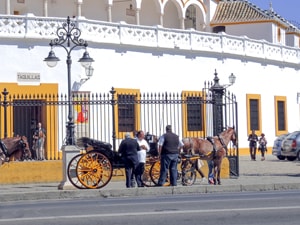
Walk south along the Guadalquivir River between the Punte de Isabel II and the Punte de S. Telmo bridges. There you’ll find the famous Maestranza bullring, revered in this city where people have a passion for bullfighting like no other place in the world. Take a tour through its small museum and see the small chapel where matadors pray before entering the ring.
Further along is the 12-sided Torre del Oro (Tower of Gold). It’s named either for the tiles that once adorned it after being constructed by the Moors in 1220, or later for the wealth from the Americas that was off-loaded into it.
I crossed the Punte de S. Telmo one afternoon and wandered through Triana. It’s a working class neighborhood on the west bank of the Guadalquivir River, home to gypsies centuries ago. Totally un-touristy, it provides a real slice of life of the city. It’s with its streets and little alleyways are filled with people going about their daily life.
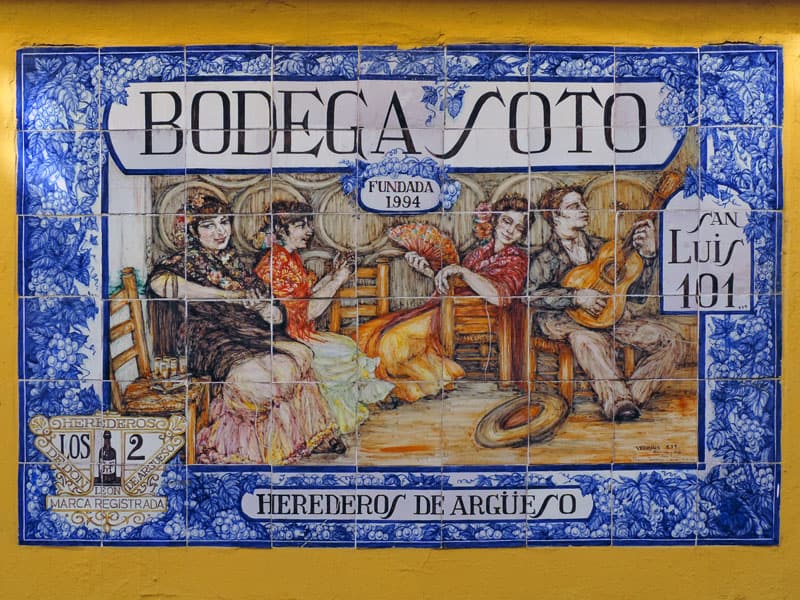
A Great Thing to Do in Seville: Walk Through 2 Fantastic Barrios
See Seville on foot and you’ll get a good feel for the traditional city walking through the Macarena neighborhood. Enter through the Macarena gate in the old city walls. The area lacks sidewalks in many places so keep your ears open for what’s coming up behind you.
La Macarena is most famous for the 17th-century statue of the Virgin of Hope of Macarena. It’s the focal point of the famous Holy Week processions in Seville, the most fervent in all of Spain. The Barrio is is exceptionally photogenic and in the midday sun it is so brilliant, the colors of the buildings seem to explode all about you.
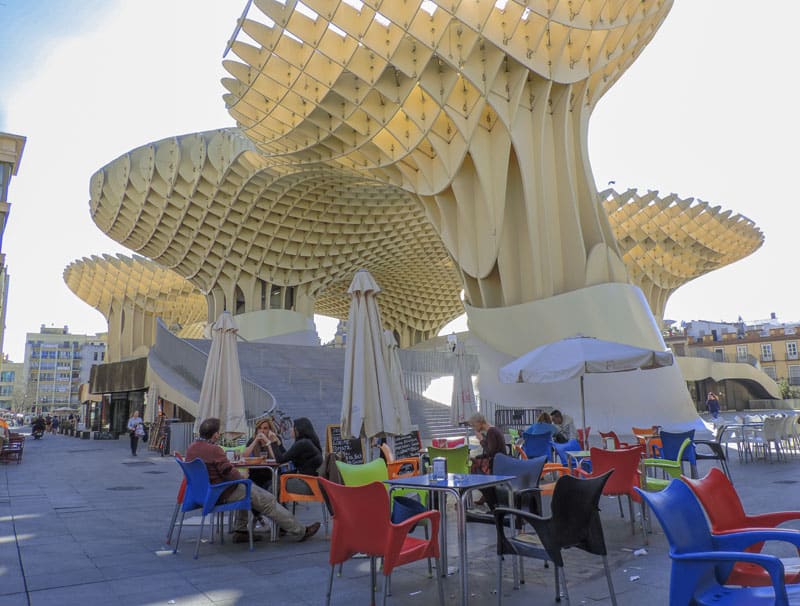
See the Metropol Parasol
While you’re walking through La Macarena you may want to ask for directions to the Metropol Parasol, on the Plaza de la Encarnación, It’s about a 20-minute walk but could take you over two hours if you take many detours, as I did, to wander other little streets along the way.
The Parasol is unlike anything you’ve seen before, and is, in fact, one of the largest wood structures ever built. Since its unveiling it’s been controversial with locals who have called it everything from mushrooms and waffles to giant potato chips.
It was built to revitalize the plaza that for years had been used as a parking lot and to unite the more popular tourist spots in the city. A nearly 100-foot tall structure of wood and steel, it contains shops, a market, and a small venue for concerts and events. Underneath there are the remains of an old Roman neighborhood that you can also visit.
I liked the Parasol since it gave vitality to what would otherwise be a “lost” neighborhood. In addition, in both design and color it also contrasted with its surroundings greatly enhancing the elements of each.
“It’s fantastic,“ one merchant who I stopped to ask for directions told me. Once I reached it I found I couldn’t agree more.
If you go:
Visit Seville
Plaza de San Francisco, 19.
Edif. Laredo. 41004
Tel: +34 955 471 232
Note: you can reach Seville quite easily and inexpensively by train on a day trip from Madrid.

Great writing, but for the love of God, Triana is full of tourist!!!
I’m from Seville and the only area is not touristic, kinda interesting and safe is Nervión & Avenida de la Palmera.
Thank you Alvaro